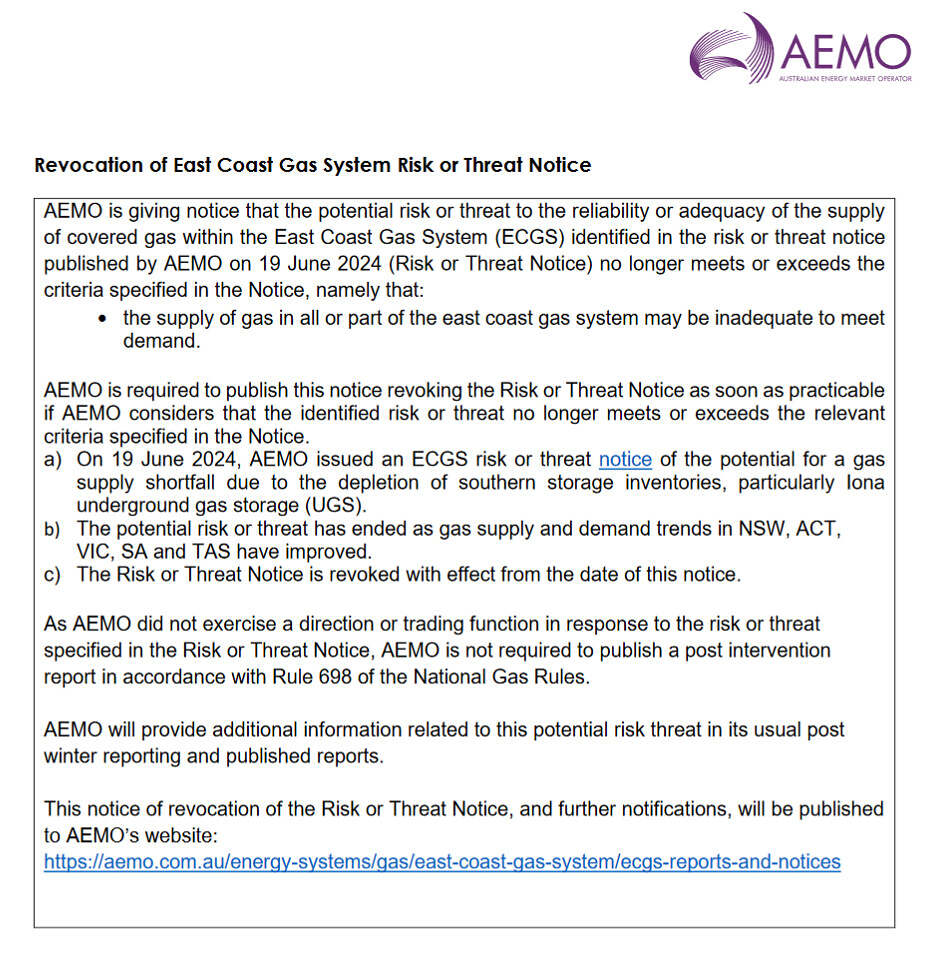This morning, the AEMO has revoked the ‘East Coast Gas System Risk or Threat Notice’ that was originally published on the 19th of June, 2024.

In the press release, the AEMO cite weather and reduced gas demand as reasons for the underlying change in dynamics:
“Favourable weather conditions toward the end of winter and reduced gas generation demand have allowed Iona to start refilling its storage capacity. Iona inventory is currently sitting at 44% or 10,736 TJ, while Newcastle LNG is currently holding 556 TJ, which is 36% full.”
Coincidentally, Goeff Chambers and Colin Packham published the article ‘Perfect storm’ warning issued to Australia’s east coast energy market last night on The Australian website. It quoted several energy executives who voiced that concerns over gas production and infrastructure still lingered, lamenting that the east coast had “dodged a winter bullet”.


Be the first to comment on "AEMO ends ‘East Coast Gas System Risk or Threat Notice’"